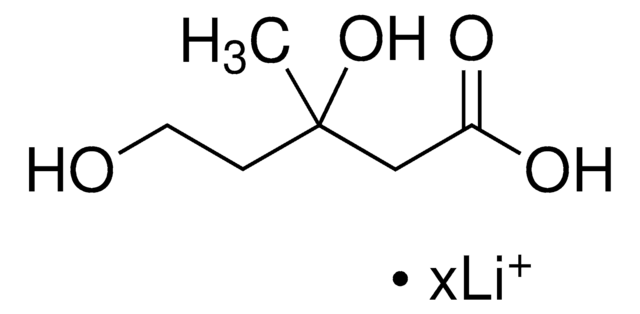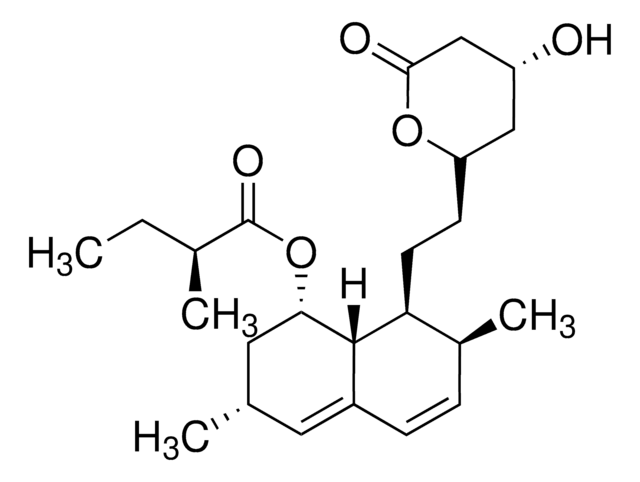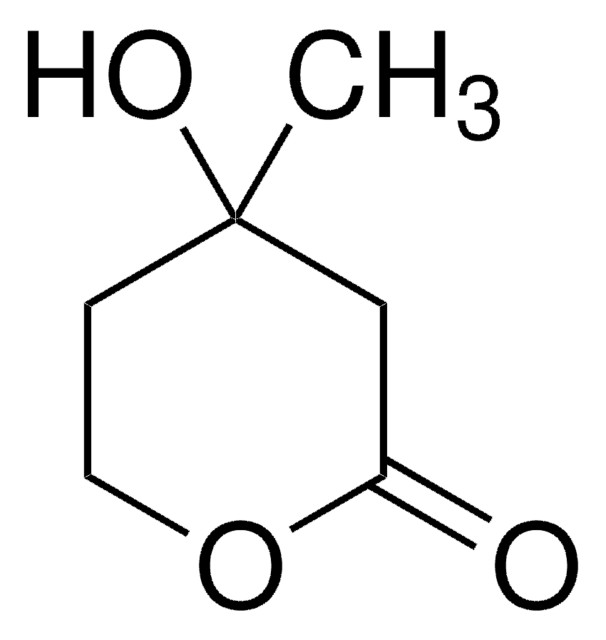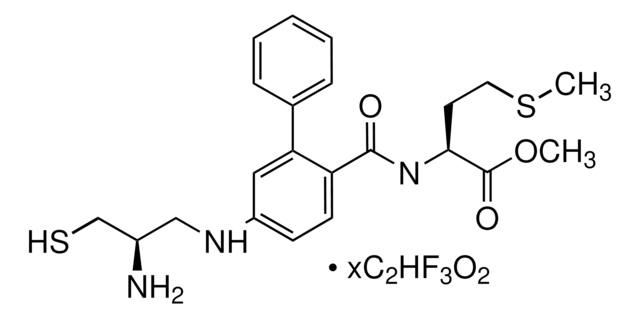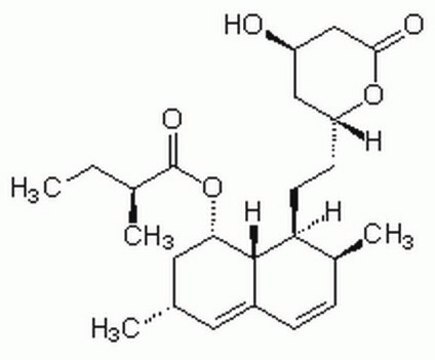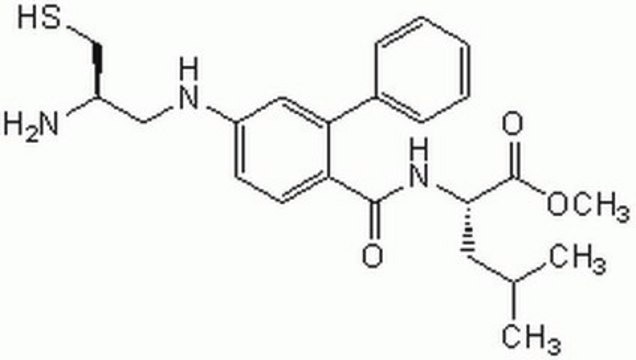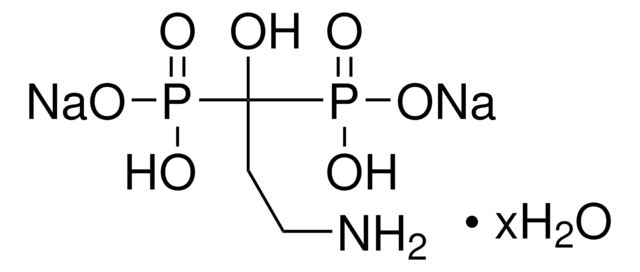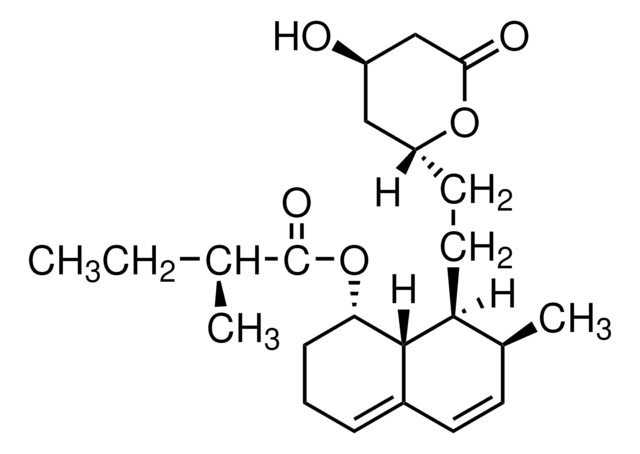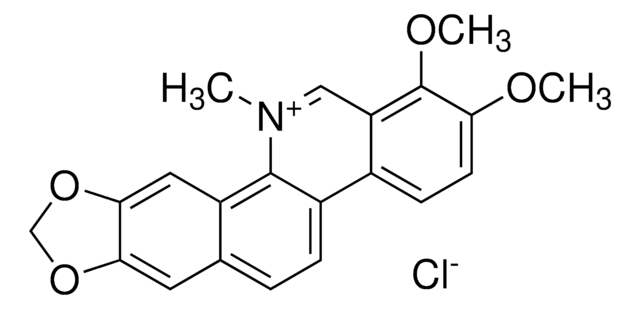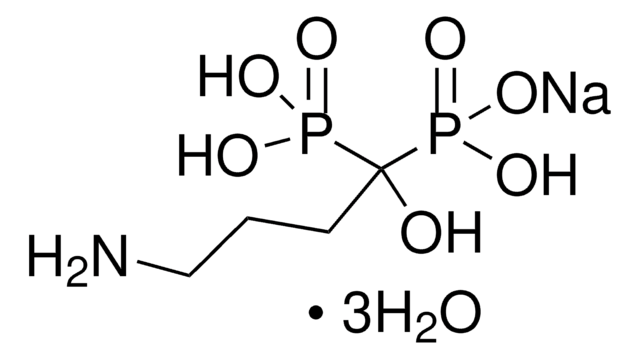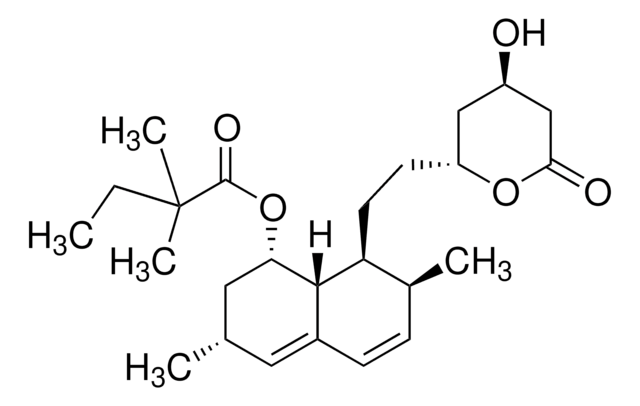G5169
GGTI 298 trifluoroacetate salt hydrate
≥90% (HPLC), film
Synonym(s):
N-[[4-(2-(R)-Amino-3-mercaptopropyl)amino]-2-naphthylbenzoyl]leucine methyl ester trifluoroacetate salt hydrate
About This Item
Recommended Products
Quality Level
assay
≥90% (HPLC)
form
film
lyophilized
impurities
<10% dimer
color
colorless
mp
99.5-100 °C
solubility
DMSO: >20 mg/mL
storage temp.
−20°C
SMILES string
OC(=O)C(F)(F)F.COC(=O)[C@H](CC(C)C)NC(=O)c1ccc(NC[C@@H](N)CS)cc1-c2cccc3ccccc23
InChI
1S/C27H33N3O3S.C2HF3O2/c1-17(2)13-25(27(32)33-3)30-26(31)23-12-11-20(29-15-19(28)16-34)14-24(23)22-10-6-8-18-7-4-5-9-21(18)22;3-2(4,5)1(6)7/h4-12,14,17,19,25,29,34H,13,15-16,28H2,1-3H3,(H,30,31);(H,6,7)/t19-,25+;/m1./s1
InChI key
WALKWJPZELDSKT-UFABNHQSSA-N
Gene Information
human ... PGGT1B(5229)
Application
- to study the anticancer effects of statins along with GGTI 298
- to study its combinatorial effects with FTI-277 on statin-mediated activation of extracellular signal-regulated kinase 5 (ERK5) in the human endothelium
- to evaluate the effect of protein geranylgeranylation (GG) inhibition on the breast cancer stem cell (CSC) population
Biochem/physiol Actions
Features and Benefits
signalword
Warning
hcodes
Hazard Classifications
Eye Irrit. 2 - Skin Irrit. 2 - STOT SE 3
target_organs
Respiratory system
wgk_germany
WGK 3
flash_point_f
Not applicable
flash_point_c
Not applicable
ppe
dust mask type N95 (US), Eyeshields, Gloves
Certificates of Analysis (COA)
Search for Certificates of Analysis (COA) by entering the products Lot/Batch Number. Lot and Batch Numbers can be found on a product’s label following the words ‘Lot’ or ‘Batch’.
Already Own This Product?
Find documentation for the products that you have recently purchased in the Document Library.
Customers Also Viewed
Related Content
Cyclic nucleotides, including cyclic AMP (cAMP), cyclic GMP (cGMP) and cyclic ADP-ribose, have been extensively studied as second messengers of intracellular events initiated by activation of GPCRs. cAMP modifies cell function in all eukaryotic cells, principally through the activation of cAMP-dependent protein kinase (PKA), but also through cAMP-gated ion channels and guanine nucleotide exchange factors directly activated by cAMP.
Our team of scientists has experience in all areas of research including Life Science, Material Science, Chemical Synthesis, Chromatography, Analytical and many others.
Contact Technical Service
